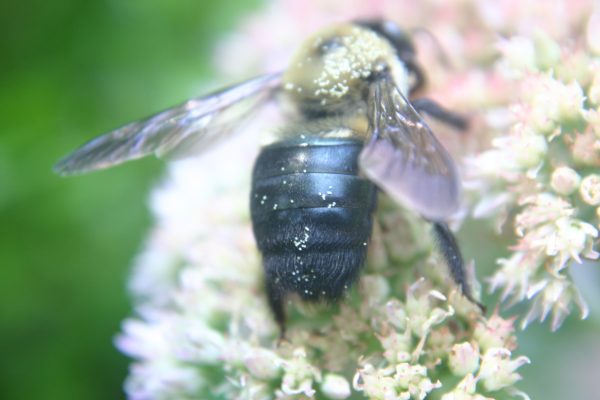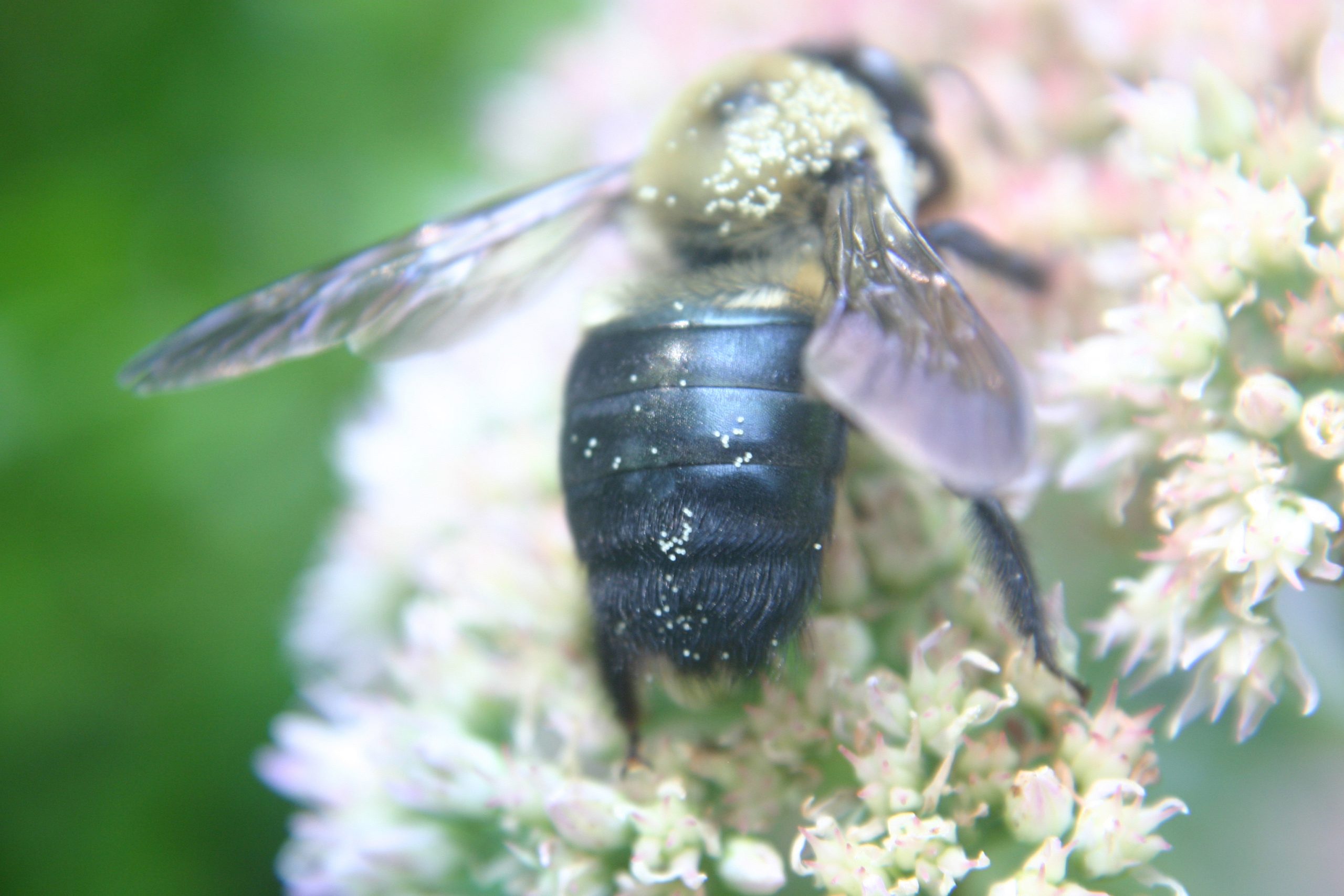Carpenter Bees – General Info and Control

Carpenter bees are seen throughout Georgia in spring and early summer. They resemble bumble bees and can damage wood around homes. Adult carpenter bees are inch-long, black insects with yellowish hairs mostly on the thorax. Their backsides are shiny black with no hairs on top. This distinguishes them from bumble bees, which are similar in size and coloration, but have yellowish hairs on top of their abdomens.
Carpenter bee eggs, larvae, and pupae are generally out of sight in cells in their holes in wood. When the wood is opened to expose them, the larvae are legless white grubs, and the pupae resemble adults.
Carpenter bees burrow into the exposed dry wood of buildings, telephone poles, and fence posts, causing an unsightly appearance and structural weakness. They usually choose wood that is soft and easy to work. They seem to prefer California redwood, cypress, cedar, white pine, and southern yellow pine. Other woods, even seasoned hardwoods and treated lumber, may be attacked.
Carpenter bees prefer bare wood but will attack wood with a stain or light coat of paint or which is lightly pressure treated. They usually avoid well-painted wood or wood with bark on it.
In spring and early summer, adult carpenter bees emerge from protected overwintering sites such as old nest galleries. Fertilized females use their jaws to bore half-inch round holes into susceptible wood. They build about one inch of gallery every six days. The galleries run 4-12 inches with the grain of the wood.
Once the gallery has been constructed, an eggs are deposited with a mass of pollen and nectar. It’s then sealed off with a plug of wood pulp and saliva. The female generally lays six eggs, at the rate of one a day.
Three methods are recommended to control carpenter bees:
1) aerosol insecticide sprays aimed directly at the adult bee; (be careful not to get it on your skin)
2) residual applications of insecticides to the wood surface being attacked;
3) preventive applications of oil-based or latex paint to wood surfaces.
Females seldom sting unless disturbed or handled; males cannot sting but can become aggressive as they roam and frighten people. Use surface insecticides such as permethrin, esfenvalerate or carbaryl. Several days after treatment, when the carpenter bee activity has ceased, plug the holes with dowel rods, plastic wood or other suitable materials. If the bees persist, additional residual insecticide treatments may be required once or twice a week until their activity ceases.
If you want to avoid synthetic chemical controls, a couple of organic options can be tried. Boric acid powder or silica gel dust (Drione) can be applied to the affected area or in the holes made by the bees.
Some folks find that simply killing the bees by swatting them with a tennis racket keeps the population at a tolerable level.
One gardener relates that carpenter bees are attracted to his ajuga groundcover so he sprays them with water to slow them down before hitting with a racquet.
Professional pest control operators might well be consulted to handle serious carpenter bee infestations. Their training and equipment enable them to reach even difficult-to-treat areas.
Make your own carpenter bee trap
Kill carpenter bees with a Bug-A-Salt gun!
Are carpenter bees good pollinators?
Clemson Entomology – Carpenter Bee

carpenter bee

carpenter bee hole in pressure-treated post

Carpenter bee damage

Carpenter bee damage












